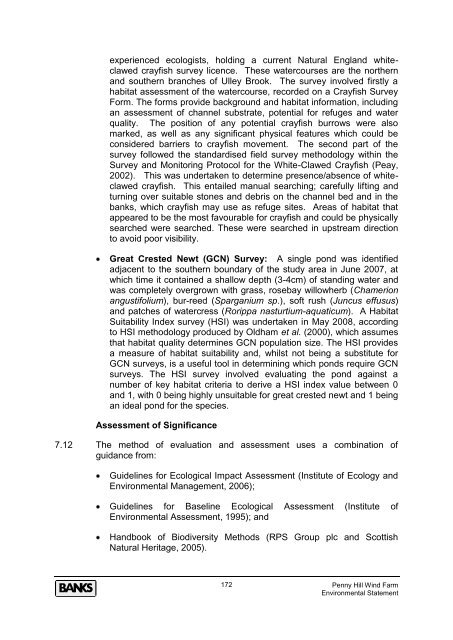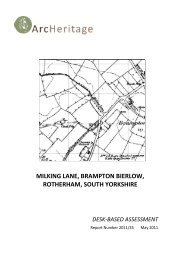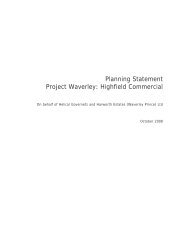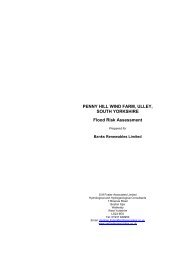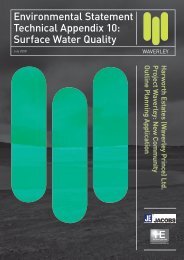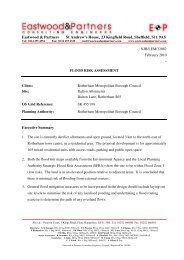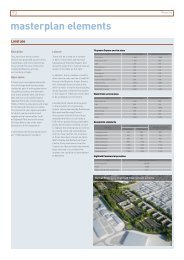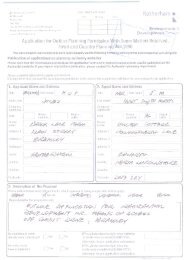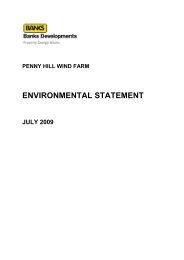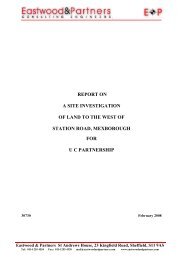environmental statement - Rotherham's Online Application for ...
environmental statement - Rotherham's Online Application for ...
environmental statement - Rotherham's Online Application for ...
Create successful ePaper yourself
Turn your PDF publications into a flip-book with our unique Google optimized e-Paper software.
experienced ecologists, holding a current Natural England whiteclawed<br />
crayfish survey licence. These watercourses are the northern<br />
and southern branches of Ulley Brook. The survey involved firstly a<br />
habitat assessment of the watercourse, recorded on a Crayfish Survey<br />
Form. The <strong>for</strong>ms provide background and habitat in<strong>for</strong>mation, including<br />
an assessment of channel substrate, potential <strong>for</strong> refuges and water<br />
quality. The position of any potential crayfish burrows were also<br />
marked, as well as any significant physical features which could be<br />
considered barriers to crayfish movement. The second part of the<br />
survey followed the standardised field survey methodology within the<br />
Survey and Monitoring Protocol <strong>for</strong> the White-Clawed Crayfish (Peay,<br />
2002). This was undertaken to determine presence/absence of whiteclawed<br />
crayfish. This entailed manual searching; carefully lifting and<br />
turning over suitable stones and debris on the channel bed and in the<br />
banks, which crayfish may use as refuge sites. Areas of habitat that<br />
appeared to be the most favourable <strong>for</strong> crayfish and could be physically<br />
searched were searched. These were searched in upstream direction<br />
to avoid poor visibility.<br />
Great Crested Newt (GCN) Survey: A single pond was identified<br />
adjacent to the southern boundary of the study area in June 2007, at<br />
which time it contained a shallow depth (3-4cm) of standing water and<br />
was completely overgrown with grass, rosebay willowherb (Chamerion<br />
angustifolium), bur-reed (Sparganium sp.), soft rush (Juncus effusus)<br />
and patches of watercress (Rorippa nasturtium-aquaticum). A Habitat<br />
Suitability Index survey (HSI) was undertaken in May 2008, according<br />
to HSI methodology produced by Oldham et al. (2000), which assumes<br />
that habitat quality determines GCN population size. The HSI provides<br />
a measure of habitat suitability and, whilst not being a substitute <strong>for</strong><br />
GCN surveys, is a useful tool in determining which ponds require GCN<br />
surveys. The HSI survey involved evaluating the pond against a<br />
number of key habitat criteria to derive a HSI index value between 0<br />
and 1, with 0 being highly unsuitable <strong>for</strong> great crested newt and 1 being<br />
an ideal pond <strong>for</strong> the species.<br />
Assessment of Significance<br />
7.12 The method of evaluation and assessment uses a combination of<br />
guidance from:<br />
Guidelines <strong>for</strong> Ecological Impact Assessment (Institute of Ecology and<br />
Environmental Management, 2006);<br />
Guidelines <strong>for</strong> Baseline Ecological Assessment (Institute of<br />
Environmental Assessment, 1995); and<br />
Handbook of Biodiversity Methods (RPS Group plc and Scottish<br />
Natural Heritage, 2005).<br />
172<br />
Penny Hill Wind Farm<br />
Environmental Statement


